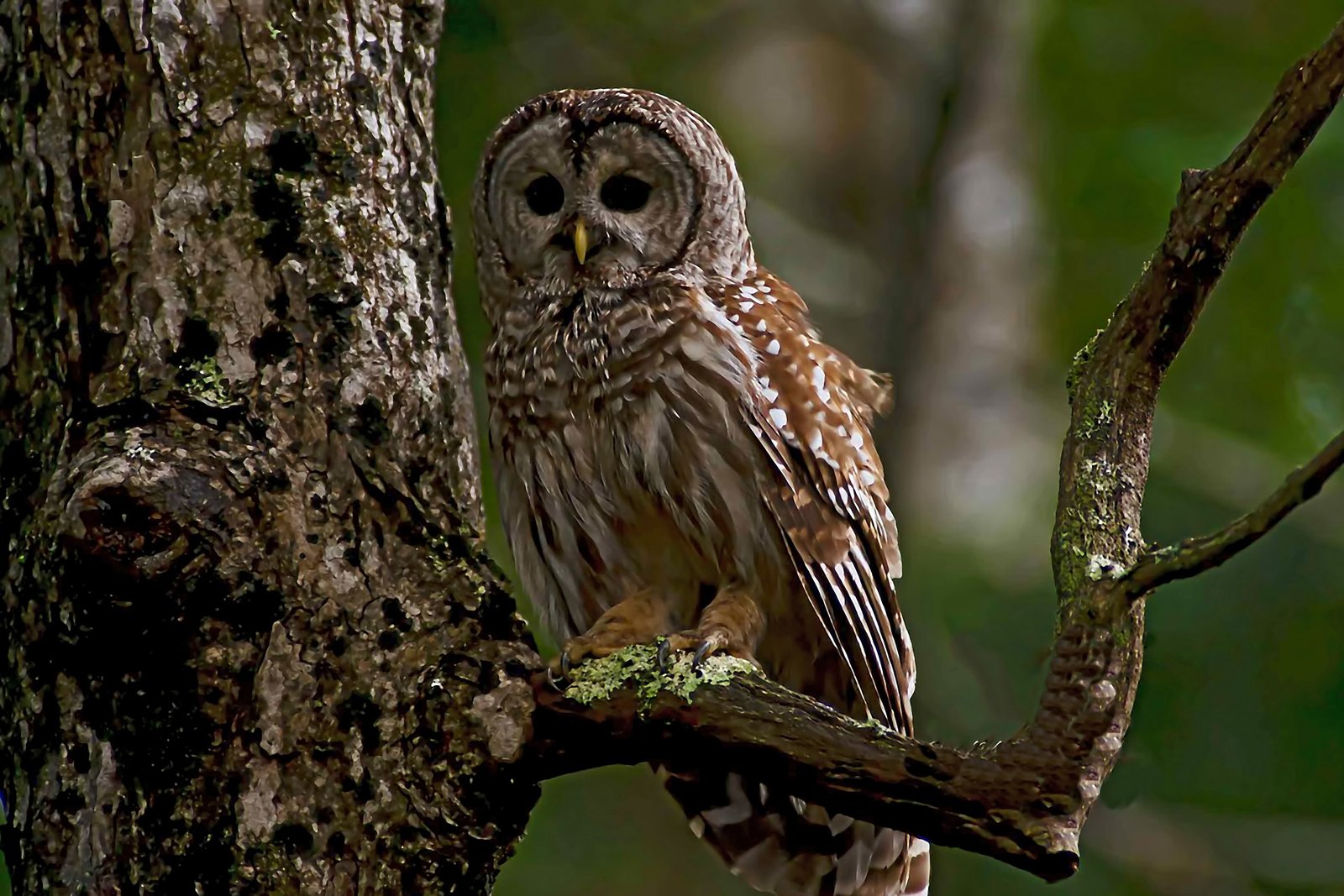Maidens and Owls: Blodeuwedd at Beltane
She wants to be flowers, but you make her owls. You must not complain, then, if she goes hunting.
Alan Garner, The Owl Service1

This certainly looks as though it might describe the creation of Blodeuwedd from flowers, so that Lleu —of whom more later—might have a wife. We’re told that she proves unfaithful and is punished by being transformed into an owl for all time.
But the story above could also be that of another young woman, created in a very similar way far from Wales. According to The Alphabet of Ben Sira,2 before God created Eve he had made a wife named Lilith for Adam. Almost immediately she and Adam began to quarrel, as Lilith refused to lie below him or to obey him, insisting on their equality as both had been made from the earth. When she saw that nothing could be done Lilith flew away into the desert and God made Eve as a new wife for Adam, this time from his rib. And, I can’t resist asking, how did that work out for Adam?
As for Lilith, her name became synonymous with that of a whole category of demons who seize and seduce men and kill babies. In the Old Testament (King James version) we read: “.. the screech owl also shall rest there, and find for herself a place of rest.”3 This can be compared with the International Standard Bible: “There also Liliths will settle, and find for themselves a resting place.”4 It’s clear that scholars often translate the word “lilith” as “screech owl”.
Breathtaking as the similarities are, these are not the only myths linking deities and young women with owls: think of Athena (Minerva to the Romans), who sprang fully formed and armed from her father’s head, and is always associated with the owl, or of Ragana, a Baltic Goddess said to date back to the Neolithic and who was often linked with the barn owl. She was said to kidnap human babies. Interestingly, Ragana could also start menopause in a woman with a touch of her red wand.
You can read Blodeuwedd’s story in the Fourth Branch of the Mabinogi. It’s part of a much longer story and impossible to give in full in this space, but the full version is here.

Llyn y Morwynion
Math son of Mathonwy, whose name is often used as the title of the whole story, is the brother of Dôn and king of Gwynedd. He is also the uncle of Gwydion, son of Dôn, and of Arianrhod, daughter of Dôn. It is Arianrhod who is tricked into giving birth to Lleu, Blodeuwedd’s future husband. A Mother Goddess, Dôn is the equivalent of Irish Danu, mother of the Tuatha Dé Danann. Giving children a matronymic rather than naming them for the father suggests matrilineal descent, and indeed just as we’d expect in that case a man’s sister’s son would inherit. Only in a patrilineal system would his own son normally be his heir.
It’s no surprise to read that Arianrhod was angry at being tricked. She set a tynged (a spell or fate) on the boy: that only she could give him a name. After being tricked by Gwydion’s magic into naming Lleu, she placed another: that he could receive arms from no-one but herself, but again Gwydion got around this by magic, so that Arianrhod placed a third tynged: Lleu should have no human wife. Gwydion, with Math’s help, made a woman out of flowers and married her to Lleu. The young man had been given the kingship of one cantref6 to get him started but could not take this up until he married: a wife was of primary importance as only through her could he claim sovereignty over the land.
One day after Blodeuwedd and Lleu had set up home together he went away, and during this time Gronw Pebyr, the ruler of neighbouring Penllyn (that’s the five villages around Llyn Tegid, Bala Lake), was stag hunting and the chase carried him into Lleu’s territory. As was customary, Blodeuwedd invited the hunting party to a feast, and here she and Gronw fell in love at first sight. They spent the night together, then another… after the third night, they had to part but first planned a way to stay together always, by killing Lleu – a task that was far more difficult that it sounds, for that young man was protected by magic and could be killed only in very unlikely circumstances.
Blodeuwedd teased the information from Lleu about how he could be killed and even persuaded him to replicate the exact scene, so that Gronw was able to cast a spear at Lleu, injuring him almost mortally. At this, Lleu changed into an eagle and flew away. Gwydion found the badly injured bird in a tree and had him nursed back to health, which took many months.
When he recovered, Lleu went to deal with Gronw, and Blodeuwedd fled with her women across the Cynfael river to the mountains, but in their fear her maidens all looked back and drowned in a lake now called Llyn y Morwynion, Lake of the Maidens. Lleu caught up with his wife here and transformed her into an owl for all time, a creature of the night, saying that for fear of other birds never again would she show her face in the light of day.
Welsh has other words for owl, but Blodeuwedd is still used. Jhenah Telyndru quotes Kristoffer Hughes, head of the Anglesey Druid order: “In Caernarfonshire and Anglesey, the older folk would say “Nosweith dda Blodeuwedd” (“Good evening, Blodeuwedd”) at the hoot of an owl. It was a common phrase I’d hear as a child, so I still use it.”7


Before this encounter, Lleu had met Gronw on the banks of the Cynfael river, just where the latter had cast a spear at him. He allowed Gronw to hold a slab of stone between them but Lleu cast his spear so powerfully that it pierced both stone and Gronw’s heart, killing him on the spot. There is a holed stone nearby (see photos above), known as Llech Ronw or Llech Goronwy (another version of Gronw’s name), but it’s extremely unlikely to be the original!8
Above the holed stone photo is one that I took at Cregennan Lakes on the northern slopes of Cader Idris, and which immediately looked to me like an eagle taking off. I saw this before I’d even properly read Blodeuwedd’s story, a synchronicity of the kind that seems to happen all the time when doing this work.
Until quite recently Blodeuwedd was seen as a treacherous wife, whose punishment was no more than she deserved, but now Goddess-loving people are reclaiming her story and pointing out that she was never asked what she might want from life, there were no kin for her to run home to or seek advice from. The men who created her probably never gave this a thought, or at least assumed she would be so grateful to be married to a king that little else would matter, despite Blodeuwedd’s real status: that of Goddess of Sovereignty in this land.
Geraldine Charles
30 April 2022
1. Garner, A., 2017. The Owl Service. London: Harper Collins
2. A Hebrew story written down in the eighth century CE – more information can be found
here: https://jwa.org/encyclopedia/article/lilith#pid-13701 (accessed 26/4/22)
3. (King James Bible) Isiah 34:14
4. (New International Standard Bible) Isiah 34:14
5. Telyndru, J., 2021. Blodeuwedd: Welsh Goddess of Seasonal Sovereignty. Moon Books, p.35.
6. A cantref was a medieval Welsh land division.
7. Telyndru, J., 2021. Blodeuwedd: Welsh Goddess of Seasonal Sovereignty. Moon Books, p.86
8. Llech Ronw photo by Stephen Mckay, CC BY-SA 4.0
<https://creativecommons.org/licenses/by-sa/4.0>, via Wikimedia Commons

